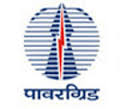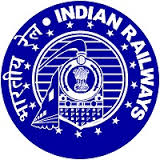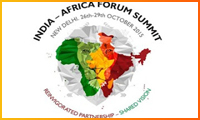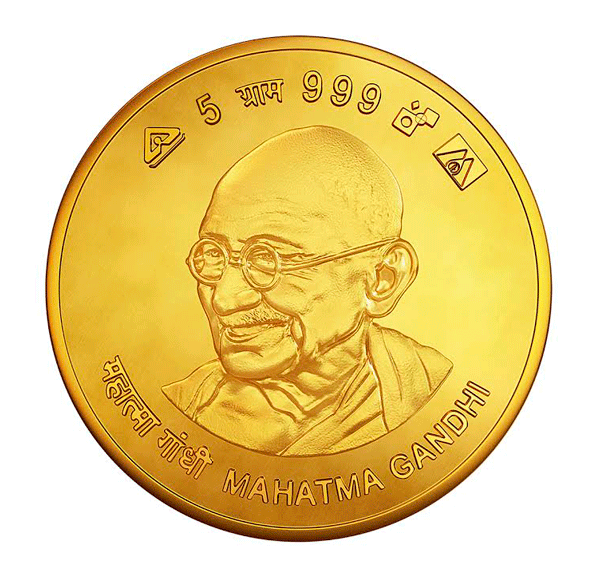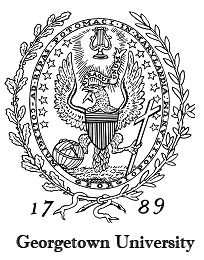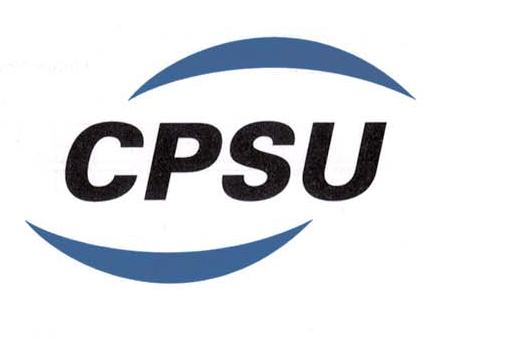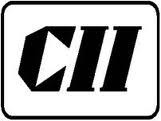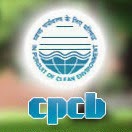Pawan Hans Limited celebrates Vigilance Awareness Week from 26th October to 31st October 2015 with an aim to spread awareness among all the employees at different levels. The week-long awareness programme was started with the administrative pledge by Dr.B.P Sharma, CMD, PHL in the presence of Shri.Keshav Rao, CVO PHL among all the employees of Corporate Office. The theme for this Vigilance Awareness Week is “Preventive Vigilance as a tool of Good Governance”. Pawan Hans organised various competitions like Essay, Debate and Quiz Competition to commemorate this occasion. CMD, PHL, Dr.B.P Sharma and CVO, PHL handed over the prizes to the awardees at its Corporate Office.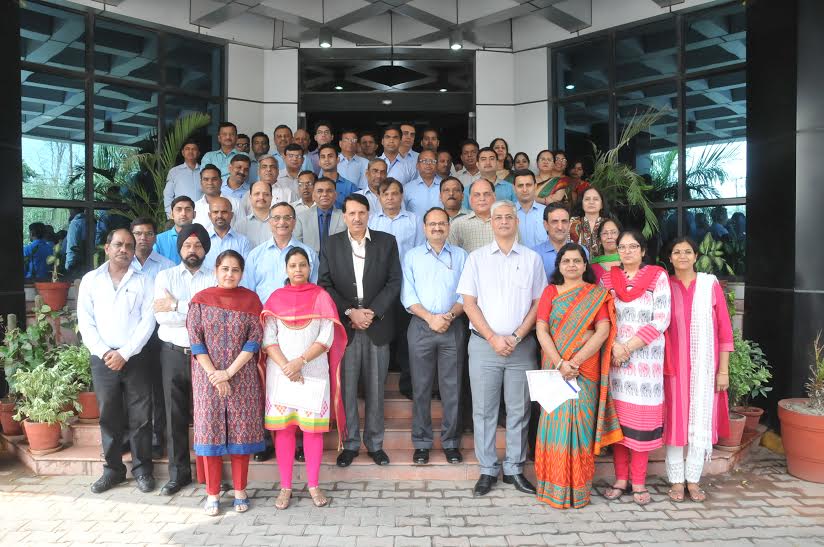
Pawan Hans celebrates Vigilance Awareness Week 2015
I S Jha appointed as CMD, POWERGRID
Shri I. S. Jha has been appointed as the Chairman & Managing Director of Power Grid Corporation of India Limited (POWERGRID) with effect from 10.11.2015. He was the Director (Projects) and was also holding the additional charge as CMD of the company.
Mr. Jha is an electrical engineer from NIT, Jamshedpur and had been the Director (Projects) of the company since 2009. He was on Board of State Transmission utilities of Haryana & Madhya Pradesh, Governing Board Member of CPRI and Member of Board of Governors of Indian Institute of Forest Management.
He is also the member of several prestigious professional bodies including Institute of Engineers (India), Power Engineering Society of IEEE in USA and CIGRE, France.
International Summit on Energy Efficient Technologies in Railways
The Minister of Railways Shri Suresh Prabhakar Prabhu inaugurated ‘International Summit on Energy Efficient Technologies in Railways’. This Conference has been organized by Indian Railways in partnership with United Nations Development Programme(UNDP). It is first of its kind initiative that the Ministry of Railways is partnering with the UNDP to explore the latest energy efficiency solutions and technology that it can reduce energy bills and facilitate sustainable development. The International Summit is a step in this direction. Chairman, Railway Board, Shri A.K. Mital, Board, Member Electrical Railway Board, Shri Navin Tandon, other Board Members, and senior officials from Railways were also present on the occasion. The theme of the summit was “Energy Efficiency Trends and Technologies in Railways.
Speaking on the occasion, Minister of Railways Shri Suresh Prabhakar Prabhu that Indian Railways and UNDP should jointly chalk out a comprehensive road map for finding latest energy efficiency solutions. Shri Suresh Prabhu said that it is now necessary that Indian Railways itself sets standard for energy efficiency in each of its operations and then examine at vis-à-vis global benchmarks. He said that Indian Railways has already embarked upon the energy audit exercise which will help in understanding the base line which will facilitate in setting up the standards and will prepare to standup with respect to global benchmark. We need to devise integrated energy efficiency plan which incorporations intervention of appropriate technology. We have to therefore find the latest and the best technology and customize it in the Indian context. It is also imperative then to find out innovative financing for achieving these objectives in collaboration with UNDP. He said we need to understand the issue of demand side management and prepare strategies accordingly. Shri Prabhu said that Indian Railways is a natural green mode of transport and we want to make it further greener by adoption of renewable energy as a major source of energy. We are going for solarization in a big way and we have started wind energy. We have also started blending bio-diesel in this connection.
In his address Chairman Railway Board, Shri A.K. Mital said that the project initiated by the Ministry of Railways in partnership with United Nations Development Program (UNDP) is very significant. The project supports efforts to improve energy efficiency in the Indian Railways, which accounts for roughly 2% of the total electricity consumption in India.
Speaking on the occasion, Member Electrical Shri Navin Tandon said that the Summit shall aid in setting benchmarks for IRs best practices from railway systems around the world. The observations thus made will help in preparing the roadmap required for achieving the desired reduction in carbon emissions. The event will also see technology leaders demonstrating new technologies and introducing innovative solutions.
Minister of Railways Shri Suresh Prabhu also launched a very significant website on green initiatives of Indian Railways with the URL www.irgreenri.gov.in. This website will provide information to Railway employees, scholars, researchers, industries and passengers about initiatives taken by Indian Railways for moving to Green Technology and also will give new thoughts and innovative ideas for using non-conventional source of energy in Indian Railways. The Indian Railways Green Energy Initiative website “www.irgreenri.gov.in” will give a glimpse of Indian Railways efforts towards making Greener Environment Healthier Mother Earth and Cleaner Planet. This is a landmark development & is first of its type by any other energy intensive department of Government of India (GoI). This site has been developed by CRIS in consultation with Electrical Energy Management directorate of Ministry of Railway. This is a very informative website and will immensely helpful in promoting image of Greener Mode of Transport i.e. Railways and will also be helpful in achieving the ultimate objective of improving Energy Efficiency System on Indian Railways by 15% as per “Vision 2020”. This is just a beginning & lot will be done in the coming days to further this website. This will in the coming days become a major source of information on GREEN initiatives by Indian Railways.
Large number of delegates from all over the world including key experts from the rail sector, rail operators, rail infrastructure management companies, energy efficiency solution providers and energy-efficient technology suppliers are expected to attend this day long summit.
On the sidelines of the event, new technologies and innovative solutions to improve energy efficiency in the Rail sector has been showcased as an exhibition by technology leaders. This endeavour has also been supported by Institution of Railway Electrical Engineers (IREE), a professional body of Railway Electrical Engineers.
This summit is facilitating dissemination of information on important advances made in design and delivery of electric traction technologies and other solutions in Rail sector. During the event, research work of experts from the field of energy efficiency are being presented.
The Summit has provided a platform for policy makers, manufacturers, researchers and other stakeholders to discuss potential energy efficiency solutions and technologies for reducing IR’s carbon footprint.
BACKGROUND INFORMATION :
Indian Railways is one of the largest transportation network of the World running more than 19,000 trains. It runs 12,000 trains to carry over 23 million passengers per day connecting about 8,000 stations spread across the sub-continent. It runs more than 7,000 freight trains per day carrying about 3 million tonnes of freight every day. More than 30,000 Route Km out of its total 66000 Rkm Indian Railways (IR) is consuming 17 billion units of energy annually for which 10,500 Cr is being paid to Electricity Boards annually and consumes 27 lacs liters of diesel costing Rs. 20,000 Cr approximately. This amounts to more than 25% of total revenue budget of IR which is second largest component of its revenue expenditure.
In view of environmental concerns, directed efforts are required to reduce energy consumption, explore new and renewable resources which come from resources that are continually replenished to mitigate impact on the environment. These energy sources are more sustainable and also getting cheaper to use and require lesser maintenance to provide energy. Extensive research and development is essential to create urgent breakthroughs in the field of renewable energy applications. This enormous challenge requires a multi-disciplinary approach in close collaboration with Government, industry, and consumer. The technological innovation with good governance approach will promote the successful implementation of innovation. Indian Railways is an efficient mode of transport and we want to make it more efficient, green and environment friendly by adoption of renewable energy as a major source of energy to Indian Railways is one of the pioneering organizations focusing on energy conservation initiatives in yesteryears.
Indian Railway is using Non-Conventional Source of Energy like Solar Plants had been provided at Rai Bareilly, Rail Bhawan, GM Buildings at Tirupati & Ajmer and installed 1 MW at Katra, Railway Station. Solar panels are also provided on Coaches roofs on pilot basis. Indian Railways has harnessed about 10.5 MW of solar energy at LC gates, way side stations, solar based street lights etc. Indian Railways is planning to setup more than 160 MW of wind mill plants. This will help in reducing carbon emission. Railway electrification is one of the major initiatives taken by Electrical Department wherein more than two-third of freight traffic and half of Passenger Traffic is hauled on close to 40% of electrified network, presently.
The regenerative energy produced in three- phase electrical rolling stock during the breaking of trains, results in saving in energy consumption up to 30%. Some of the other initiatives are smart sense and smart grid system, provision of LED bulb under domestic efficient lighting program (DELP) Scheme; Introduction of Energy Efficient IGBT.
India Africa Forum Summit 2015- E-Booklet Released
India Africa Forum Summit 2015- E-Booklet has been released by the XPD division of MEA.
India Africa Forum Summit 2015 was a celebration of entwined dreams, surging aspirations and combined strengths of over two billion people of India and Africa, home to nearly one-third of the world’s humanity. The Third India-Africa Forum Summit held in New Delhi (October 26-29) unveiled a “dynamic and transformative agenda” of mutual empowerment and mutual resurgence that will bring India and Africa closer in years and decades to come.
[Click here for E-Booklet]
THIRD INDIA-AFRICA FORUM SUMMIT 2015: DELHI DECLARATION 2015
THIRD INDIA-AFRICA FORUM SUMMIT 2015: INDIA AFRICA FRAMEWORK FOR STRATEGIC COOPERATION
First-ever National Gold Offerings by Government of India
Prime Minister of India, Narendra Modi, launched the Indian Gold Coin and Indian Gold Bullion at his official residence, 7 Race Course Road, New Delhi. Both, the coin as well as the bullion are the first ever national gold offerings by the Government of India.
The coin and bullion will be of 24 karat purity, 999 fineness and will have the national emblem of Ashok Chakra engraved on one side and the face of Mahatma Gandhi on the other, the MMTC said in a media statement.
MMTC, a Government of India Enterprise, has been mandated by the government to launch the Indian Gold Coin and the Indian Gold Bullion under the Ministry of Commerce and Industry, Department of Commerce.
These will be minted by the Security Printing and Minting Corporation of India and hallmarked by the Bureau of Indian Standards. The World Gold Council will be the marketing associate in this venture to create awareness about the coin and the bullion.
Initially, the coin will be available in denominations of 5 and 10 grams with more weight options to be launched later. The bullion will initially be available in a denomination of 20 grams. The coin and bullion will carry advanced anti-counterfeit features hence protecting consumer interests and will come in tamper-proof packaging.
Both the Indian Gold Coin and the Indian Gold Bullion are among the key initiatives of the gold reform schemes announced in the 2015 budget.
This along with the gold monetisation scheme will give added impetus to organised recycling of gold in India, which will help to boost the Indian economy further. The Indian Gold Coin and the Indian Gold Bullion align with the ‘Make in India’ initiative of Government.
The media statement added that these will become part of a global basket of gold coins and bullions that currently include the American Eagle (USA), Panda Coin (China), Maple Leaf Coin (Canada), Krugerrand Coin (South Africa) and others, and will be made available in overseas markets including the UK, the USA and South Africa.
The coin and bullion will be sold through MMTC outlets across 15 Indian cities. Several banks and India Post will soon be added to increase the availability and distribution.
Sindhu Pillai appointed Dy Secretary- Department of Financial Services
Ms Sindhu Pillai IPS (AGMUT 2001) presently posted as Deputy Commissioner of Police(DCP), Crime Branch, Delhi Police, has been appointed as Deputy Secretary, Department of Financial Services.
IndianBureaucracy.com wishes Ms Pillai the very best.
Email, Text or Web ? Study probes Patients’ preferences for receiving Test Results
Summary: The results of common medical tests are sometimes delivered to patients by email, letters or voice mail, but are these the most preferred methods? According to one of the first studies to look at this question, the answer is no.
The Georgetown University Medical Center (GUMC) survey, published today in the Journal of the American Board of Family Medicine, finds that the largest portion of participants was comfortable receiving test results through password-protected websites or portals. (The survey did not include in-person communications.)
The survey of 409 participants suggests that while password-protected web portals are highly preferred, participants don’t mind a variety of non in-person communication methods including email, texts or voicemail for receiving results of common tests such as blood cholesterol levels.
However, that is not the case for two very sensitive tests — non-HIV sexually transmitted infections (STIs) and genetic test results. In those cases, receiving the results via a password-protected patient portal/website was highly preferred.
“Communication with patients may need to be on a case-by-case basis — every individual may have a personal preference, and there may be a way to indicate those preferences in the patient’s record. The goal of this study was to try to better understand these preferences, so we can improve doctor-patient communication,” says the study’s lead researcher, Jeannine LaRocque, PhD, assistant professor of human science in the School of Nursing & Health Studies at GUMC.
It is not uncommon for a physician to call or email a patient with results to common tests without any idea of which is preferred in different contexts, but “this study makes clear that the majority of people prefer something different than what we’ve been doing,” says the study’s senior researcher, Daniel Merenstein, MD, director of research programs in the department of family medicine at GUMC.
The survey tested the desirability of seven different methods of non-in-person communication in receiving three different kinds of tests: common tests such as blood cholesterol and colonoscopy results; non-HIV STIs; and genetic testing (predisposition to a disorder, carrier of an inherited gene linked to a disease and a carrier of a genetic disorder).
The seven methods of communications surveyed were a password-protected patient portal website, phone voicemail, personal email, letter, home voicemail, fax and mobile phone text.
Researchers found that in all categories, patients were least comfortable receiving information via fax.
Half or more preferred receiving cholesterol or colonoscopy results in four methods: password protected patient portal websites, personal voicemail, personal email or letter. The majority did not want to receive a home voicemail, mobile text message or a fax.
For receiving results of STIs, only one method was preferred by the majority (51 percent) of participants — password-protected websites. No single method was preferred for genetic test results; the closest, at 46 percent, was also password-protected websites.
LaRocque, a researcher focused on genetics and molecular biology, is interested in how sensitive information is transmitted to patients. “With these highly sensitive medical results such as genetic test results, patients may not trust the privacy of methods such as personal voicemail or email, whereas password-protected websites provide an added level of security, which may be necessary as these tests become more prevalent in primary care practices,” she says.
But other studies have found that a minority of patients has signed up for available patient portals, and only half have actually activated their sites, the researchers say.
The researchers point out one potential bias in the study: since the majority of completed surveys were administered online, those who participated may be innately more comfortable with electronic communication.
Study co-authors are Christina Davis and Tina P. Tan from GUMC and Frank J. D’Amico from Duquesne University in Pittsburgh.
There was no external funding or financial support for this study.
Source:Georgetown University Medical Center
Government considering African route to help central PSUs
The Centre is considering a plan to help the Central Public Sector Undertakings (CPSUs), including those of them incurring losses, set up subsidiaries or form joint ventures with State-owned enterprises (SOEs) in poor African countries.
The DPE wants the MEA to influence African countries, especially those with hardly any private capital investment currently, to replicate the ‘Nehruvian’ post-independence period industrial policy of India that heavily favoured SOEs.
For such a policy, the DPE, as per its proposal, wants these African countries to reserve several sectors for SOEs so that these CPSEs can operate in a near monopolistic environment for about 15-20 years, the sources said.
“The African countries will have to make policies conducive for the PSUs to operate. Private companies tend to not take the risk of investing in unstable economies such as those in Africa. So PSUs, with the help of African governments, can take the lead in investments and the private sector can then follow,” an official, who did not wish to be named, said.
Once the industrial activity picks up following such huge investments by the public sector, those African governments, like India, can slowly start liberalising such a regime and attract private sector investment, they added.
If the plan becomes a reality, many of the CPSUs, currently struggling in India due to competition from far more nimble and efficient private sector companies, can get a new lease of life and turn profitable, they said.
The idea took shape when the Minister of State HI & PE G. M. Siddeshwara visited African countries including Malawi, Zambia, Nigeria and Liberia in September. The minister travelled as the special envoy of Prime Minister Narendra Modi as part of preparations for the recently concluded India-Africa Forum Summit in New Delhi.
According to the sources, though the DPE had written to the MEA asking the latter to include a ‘special session’ during the Summit on opportunities and challenges for Indian PSUs in poor African countries, the MEA had demurred citing difficulties in scheduling as most of the arrangements had been almost completed.
The new plan is to ask the MEA to convene a special meeting of all the African high commissioners / senior diplomats stationed in Delhi and elicit their views on the strategy. On its part, the HI & PE ministry will shortly call a meeting of CPSUs to discuss the idea.
The development comes even as the Centre has identified 58 loss-making PSUs for either reviving or closing them down, and has been holding inter-ministerial consultations to chalk out a viable strategy. It is also planning to raise Rs.69,500 crore from disinvestment of PSUs this year.
Africa is not entirely a new playing ground for Indian PSUs, especially for those in the energy sector. Indian private companies including Bharti Airtel and the Tata Group also have their presence in several African countries. However, India is far behind China in this game. China-Africa trade has surpassed $200 billion, and is almost thrice as large as the about $70 billion for India-Africa trade. By 2020, China aims to double its trade with Africa to $400 billion and increase direct investment to $100 billion.
W. P. S Sidhu, Non-Resident Senior Fellow (Foreign Policy), Brookings India said: “I would caution against approaching all the 54 African countries in the same manner. Some such as South Africa are inclined towards capitalism, but others like Zimbabwe are strongly socialist. Then there are countries where there is a mix of both.”
Mr. Sidhu said Africa presents a great potential that neither the PSUs nor the private sector firms can take advantage of on their own, and therefore will have to work together. In areas such as railways, oil and gas and heavy industries, the public sector has an edge, he said.
France reaffirms 2b euros for 3 cities under smart city plan
Government is committed to removing all hurdles to promote infrastructure development: Venkaiah Naidu
The Government is committed to removing all hurdles to promote infrastructure development. This was stated by Mr. M Venkaiah Naidu, Minister of Urban Development, Housing and Urban Poverty Alleviation and Parliamentary Affairs, Government of India while addressing a Session on “Renewing Infrastructure Finance” at the National Strategy Day on India, jointly organized by the World Economic Forum and Confederation of Indian Industry (CII) in New Delhi today.
The Minister stated that the government – through the reforms that it was undertaking – was trying to change the 3 “M’s” – Mindset, Models and Mechanisms. In this context, he pointed out that the mindsets of the people were already changing. There is now a greater demand for better infrastructure and users were now more inclined to pay a fee for the same.
Talking about some of the major reforms that the government has carried out in the recent past, the Minister stated that the Government was trying to encourage the adoption of the PPP model for infrastructure development. He stated that steps are being taken to make it easier to get construction approvals with the creation of a single window mechanism.
The Minister stated that there was a need to enhance the capacity of the urban municipal corporations and was setting up Special Purpose Vehicles (SPVs) to enhance infrastructure development in urban areas. The Central Government would provide seed financing to the urban municipal bodies through these SPVs. The urban municipal bodies in turn could then use this seed capital to raise commercial finance from banks for the projects they are undertaking.
In the Minister’s view, these measures have once again led to greater interest among investors in India’s infrastructure sector. He pointed out that not long ago, investor interest had waned thanks to the indecision in the government. Now, the situation has changed considerably and the number of bidders for infrastructure projects is on the rise.
In his address, Mr. Sumit Mazumder, President, CII stated that over the last two decades, infrastructure development has come a long way in India and several iconic projects like the Mumbai Airport have been developed. However, a lot more still needs to be done. He pointed out that the bank portfolios were overstretched with infrastructure projects that they had financed and which were now in danger of becoming NPAs. He commended the government for its efforts in addressing this issue with the spate of infrastructure reforms that it had undertaken and hoped that a sustained momentum in this direction would help alleviate the problem.
Mr. Mazumder also pointed out that the government had taken several measures to get infrastructure projects which were stuck due to various reasons off the ground. This helped spark greater investor interest in India’s infrastructure sector.
According to Mr. Alan Davies, Chief Executive Officer, Diamonds and Minerals, Rio Tinto, there were several states in India which had made good progress in making it easier to do business especially in the infrastructure sector while many others had tremendous ground to cover in this regard. He felt that the Government should encourage the adoption of global best practices by all bidders of infrastructure projects in India in order to help bring Indian infrastructure to global standards.
Ms. Punita Sinha, Founder and Managing Partner, Pacific Paradigm Advisors was of the view that the earlier system of infrastructure financing was clearly inadequate to address the needs of the sector. Short term debt financing was being used to finance long term projects without a clear understanding of the cash flows that the project would generate. The rules at the time did not allow for long term financing. This was one of the reasons that many of these projects turned into NPAs. With long term financing being facilitated now, she hoped that the situation would change.
Ms. Sinha also stated that a new breed of investors was coming into the market now. These investors had a longer term view of the market and had the appetite to take on brownfield projects which were up for sale.
Mr. Richard Samans, Head of the Centre for the Global Agenda, Member of the Managing Board, World Economic Forum stated that globally the old model of infrastructure financing was changing and both developed and developing countries were looking at alternative financing models such as the PP approach. Even groups like the G20 had set up a forum for member countries to share their experience in this regard.
France and India Agree To Details on Rafale Purchase
In a big defence news, under an offsets deal reached by India and France regarding the acquisition of 36 Rafale fighter jets, France has agreed that it will fulfill its obligations only within the aerospace arena and not partly through research and development projects, an Indian Defence Ministry source said.
With a final agreement reached on offsets, India and France are likely to sign a protocol by the end of this month to buy 36 Rafales and thereafter the price negotiations will follow, leading to a final deal in the next four to six months, the MoD the source added.
Ever since Indian Prime Minister Narendra Modi announced in his April visit to Paris that India intended to buy 36 Rafales on a government-to-government (G2G) basis, talks between India and French were stuck on the issue of offsets, with the French initially not agreeing to discharge offsets at all.
India wants 50 percent of the total amount of the deal, estimated to be around $10 billion for 36 Rafales, including weaponry, to be matched by offsets involving purchases from the Indian aerospace sector, including tie-ups and cooperation with domestic defense companies to boost India’s defense production base.
The French wanted 20 percent of the offsets to be discharged through R&D tie ups with India’s Defence Research and Development Organization (DRDO), but the MoD rejected their request, the source added. The list of R&D projects in which the French had evinced interest to participate is not known.
But Dassault Chairman Eric Trappier said, “We are working with the Indian authorities on the offsets. Nothing has been decided. We are following the Make in India program. It’s going in the right direction. Talks are still continuing.”
“The offset policy of 2012 allows offset obligations to be discharged through collaboration with DRDO, subject to some conditions. However, offsets are best undertaken through collaboration with industry, for direct impact on defense manufacturing. This may be the reason for the MoD’s position,” said Vivek Rae, MoD’s former director general of procurement. “It is not a good idea to discharge all offsets through DRDO.”
“A G2G contract is a customized contract. So the two countries can agree to a unique set of terms of conditions, but these have to be mutually acceptable. While doing so, neither party can completely overlook the laws, regulations, procedures and precedents,” said Shri Amit Cowshish, MoD’s former financial adviser.
India typically allows companies to discharge offset obligations through participation in R&D projects along with the direct purchase of equipment and systems in designated areas from industry, and training.
The G2G deal on Rafale was a separate deal to the 2007 request for proposal, which has since been canceled. Under the 2007 RFP, India was to procure 126 Rafales with 108 being license-produced in India.
MoD’s top acquisition body, the Defence Acquisition Council, on Sept. 1 had given the go-ahead to the negotiation committee on purchasing Rafale Jets for the Indian Air Force.



